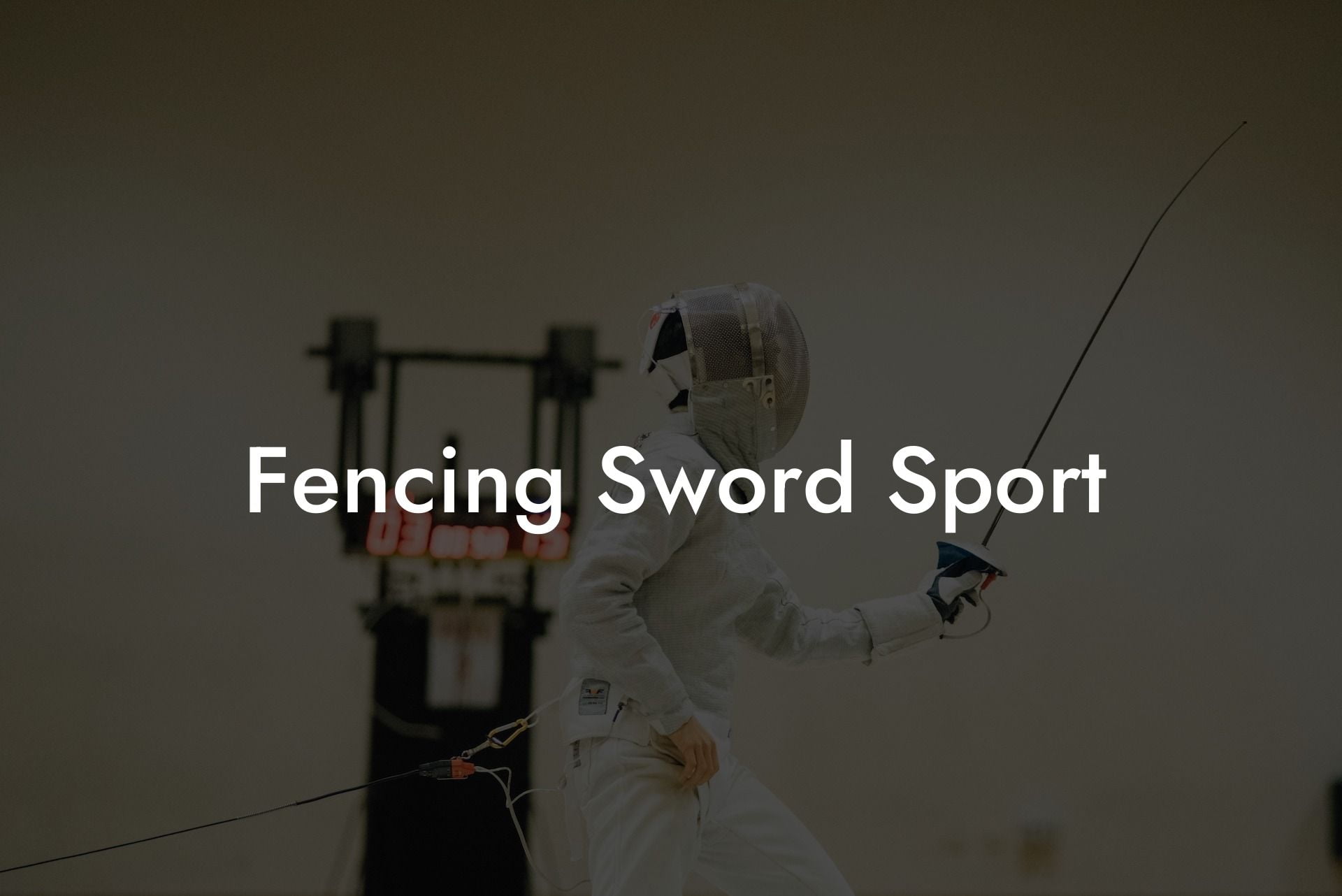Discover the fascinating world of fencing sword sport, an ancient yet ever-evolving discipline that combines physical skill, mental strategy, and a touch of elegance. In this comprehensive guide, we'll delve into the history, equipment, and techniques of fencing, as well as how to get started in this captivating sport.
Fencing Sword Sport Table of Contents
History and Origins of Fencing
Fencing has a storied history, with roots dating back to ancient Egypt, Greece, and Rome. The sport evolved over time, influenced by the rise of dueling in medieval Europe and the subsequent development of sophisticated swordplay techniques. Modern fencing, as we know it today, was shaped by the establishment of the first fencing academies in the 18th and 19th centuries, and its inclusion in the first Olympic Games in 1896.
Types of Fencing Swords
There are three primary types of fencing swords, each with its own unique characteristics:
- Foil: A light and flexible weapon, the foil has a blunted tip and a small bell guard to protect the hand. Points are scored by landing the tip on the opponent's torso. Foil fencing emphasizes precision and technique.
- Épée: Slightly heavier and stiffer than the foil, the épée also has a larger bell guard. Points can be scored anywhere on the opponent's body, and double touches (simultaneous hits) are allowed. Épée fencing requires a focused and strategic approach.
- Sabre: With a curved blade and larger hand guard, the sabre allows for both cutting and thrusting actions. Points are scored by hitting the opponent's upper body, including the head. Sabre fencing is characterized by its speed and aggression.
Essential Fencing Equipment
Before embarking on your fencing journey, it's important to familiarize yourself with the essential equipment. This includes:
- Weapon: As discussed above, choose between the foil, épée, or sabre based on your preference and goals within the sport.
- Mask: A protective mask with a wire mesh front and padded lining is essential for safety. Some masks come with removable, washable liners for hygiene.
- Jacket: A padded, close-fitting jacket provides protection to the torso and arms. Jackets are typically made from ballistic-rated materials and should have a snug, comfortable fit.
- Glove: A sturdy, padded glove is worn on the weapon hand to protect against errant hits. Gloves should fit snugly without restricting movement.
- Plastron: A padded half-jacket worn under the main jacket for extra protection, particularly for the weapon arm and torso.
- Breeches: Knee-length pants designed to provide freedom of movement and protection to the legs.
- Socks and Shoes: Long socks are worn to cover the legs, while low-profile, non-marking shoes with lateral support are ideal for swift footwork on the fencing strip.
Getting Started in Fencing
To begin your fencing journey, follow these simple steps:
- Find a club or school: Look for a local fencing club or school with experienced coaches and a welcoming atmosphere.
- Start with a beginner's class: Join a beginner's class or take private lessons to learn the basics of footwork, blade work, and strategy.
- Practice, practice, practice: As with any sport, practice is key to improvement. Attend regular training sessions and consider additional footwork or conditioning exercises outside of class.
- Compete: Test your skills and gain experience by participating in local, regional, and national competitions.
Fencing Sword Sport Example:
Imagine two foil fencers facing off on the fencing strip, their focus and determination apparent as they prepare to start a bout. The referee signals the beginning, and they launch into a thrilling exchange of attacks, parries, and ripostes. The fencers exhibit masterful footwork, moving with grace and fluidity while maintaining a constant awareness of their distance and timing. After a series of lightning-fast blade actions, one fencer scores a touch on their opponent's torso, earning a point. The match continues, each fencer pushing their limit, striving for victory, and demonstrating the artistry and athleticism that make fencing an exceptional sport.
We hope you've enjoyed learning about the fascinating world of fencing sword sport. With its rich history, engaging techniques, and unique blend of physical and mental challenges, there's no better time to pick up a foil, épée, or sabre and join the fencing community. Explore more about the sport, equipment, and fencing culture through our other informative guides on Anchorage Fencing Club. If you found this article helpful, please share it with your friends and fellow fencing enthusiasts!













